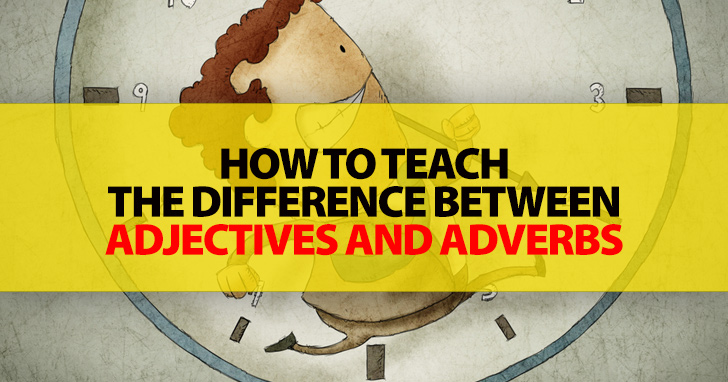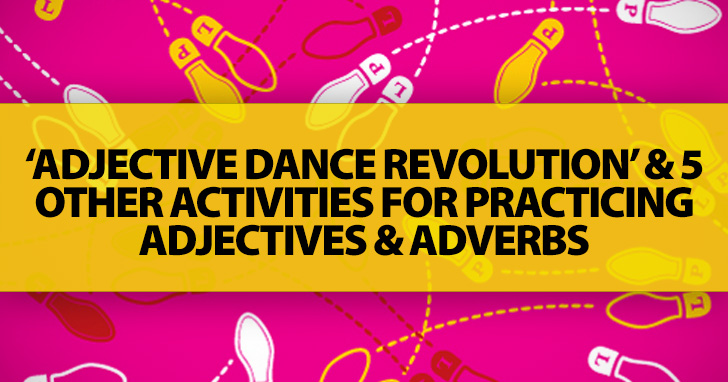How To Teach The Difference Between Adjectives And Adverbs


Here are some fun and sometimes fanciful activities that will get your students in the adjective/adverb mood.

Are your students writing simple but boring sentences? Are you encouraging them to include adjective and adverbs in what they are saying but running into resistance from them? This fun and lively activity will get your students in the mood to say exactly what comes to mind by using adjectives and adverbs. Start by writing a simple, adjective and adverb free sentence on the board. Your sentence might be something like this: The boy ran to the store. Then talk about how adding adjectives and adverbs to this sentence can make it not only more interesting but also tell a different story. The young boy ran quickly to the huge department store. The silly boy ran clumsily to the joke store. They are quite different stories, aren’t they? Help your students picture what each sentence says about the boy and his circumstances. Then encourage your students to add adjectives and adverbs to the base sentence to create their own story. They can be as silly or as serious as your students want them to be. After students have shared their sentences with their classmates, put another simple sentences on the board and see what other stories your students come up with.
If your students like to get up and get moving in class, and who doesn’t, try this full body exercise as an adverb and verb review. On several slips of paper, write a verb/adverb phrase such as fall loudly, play energetically, cook poorly, read actively, or teach enthusiastically. If you can make the phrase silly, it will be even more fun for your students, but make sure they have some familiarity with each of the words on the paper slips. Then put them all into a hat and have students come up front one at a time and draw a slip of paper. Students must act out that phrase for their classmates who must guess both the verb and the adverb to score five points. Also award five points to the actor if someone is able to guess his phrase in less than thirty seconds, three points for a guess in less than a minute, and one point for a guess in more than one minute but before everyone gives up. Make sure everyone in class has at least one chance to show their stuff. Then tally your results and award a prize to the winner.
This adjective review also serves as a bonding activity for your students. Have everyone sit in a circle and start with a blank piece of paper. On that paper, students write their name. Under their name, they write one adjective that they think describes them. Everyone then passes their paper to the right, and each person adds an adjective to describe the person whose name is at the top of the page. Tell your students to make their adjectives positive ones that will encourage their classmates. When everyone has written on the page, pass papers again and have each person add an adjective. Continue until each page reaches its original owner. Students can then read what their classmates have to say about them. If you like, have your students draw a self-portrait and write the adjectives their classmates used to describe them around the outside of the paper.
This activity is done in pairs, and you will need copies of several different pictures, the more detailed the better, for each pair. Students start by placing all of their pictures face up on the table between them. One person gives one adjective describing one of the pictures or an element in one of the pictures. The second person must then guess which of the pictures his partner is describing. If the person cannot guess, the first person gives another adjective and the second person makes another guess. This continues until the second person guesses the correct picture. Students remove that picture form the table. Now students reverse roles describing a picture and guessing at the correct one. This activity is a great way to bring informational material into your classroom to support a unit you might be teaching (such as pictures of professional sports teams or players when teaching a unit on sports).
This is a fun game to play around Halloween, but it works for any time of the year, too. In several brown paper lunch bags, place some unusual objects, and number the bags on the outside. Have one student come up, one at a time, and feel what is in a bag. They can take notes as they feel each object, but they cannot look inside. As they are feeling the objects, students may return to their seats to write down their guess or notes for each bag. Students move back and forth between the bags and their desks as needed. For each bag, they must guess what the object was that they felt. In addition, they must write a sentence using as many adjectives as they can to explain why they guessed the item that they guessed. For example, a student might guess that bag #2 contained popcorn because it felt greasy, light, bumpy, and grainy on the outside. Once everyone has completed their sentences, reveal what was in each bag and see how many students guessed right for each one.
Are your students outgoing? Do they like to move and groove? If so, this adverb activity will be perfect for them. Start by brainstorming with your class a list of the different ways a person can move. (Your list might include jump, slide, squat, etc.) Write your list on the front board. Draw a line dividing your board and on the other side brainstorm a list of how a person might move. (Your list might include slowly, boldly, passionately, clumsily, etc.) Now give each person in class or each pair of students eight index cards. On each card, students must match up a movement with a way of moving (such as jump passionately). Encourage students to be creative. Once all the cards are filled out, tell students they will use these cards as dance moves, and they should arrange their moves in order to make a perfect dance. Put on some lively music while your students move and arrange their cards to perfect their dance routine. After you have given students enough time, encourage individuals or pairs to come up and demonstrate their dance for the class.
Part of what we ESL teachers need to do is encourage our students to be specific..
These activities for using adjectives and adverbs to just that. They are fun and whimsical and will get your students moving and grooving with descriptive language as they use adjectives and adverbs to enhance their sentences.
Please share them with us in the comments section below.